Before vs. After: Vaccine Headlines Make a Comeback
During World Immunization Week, we explore the pandemic-driven declines in routine vaccinations and the risk of history repeating itself.
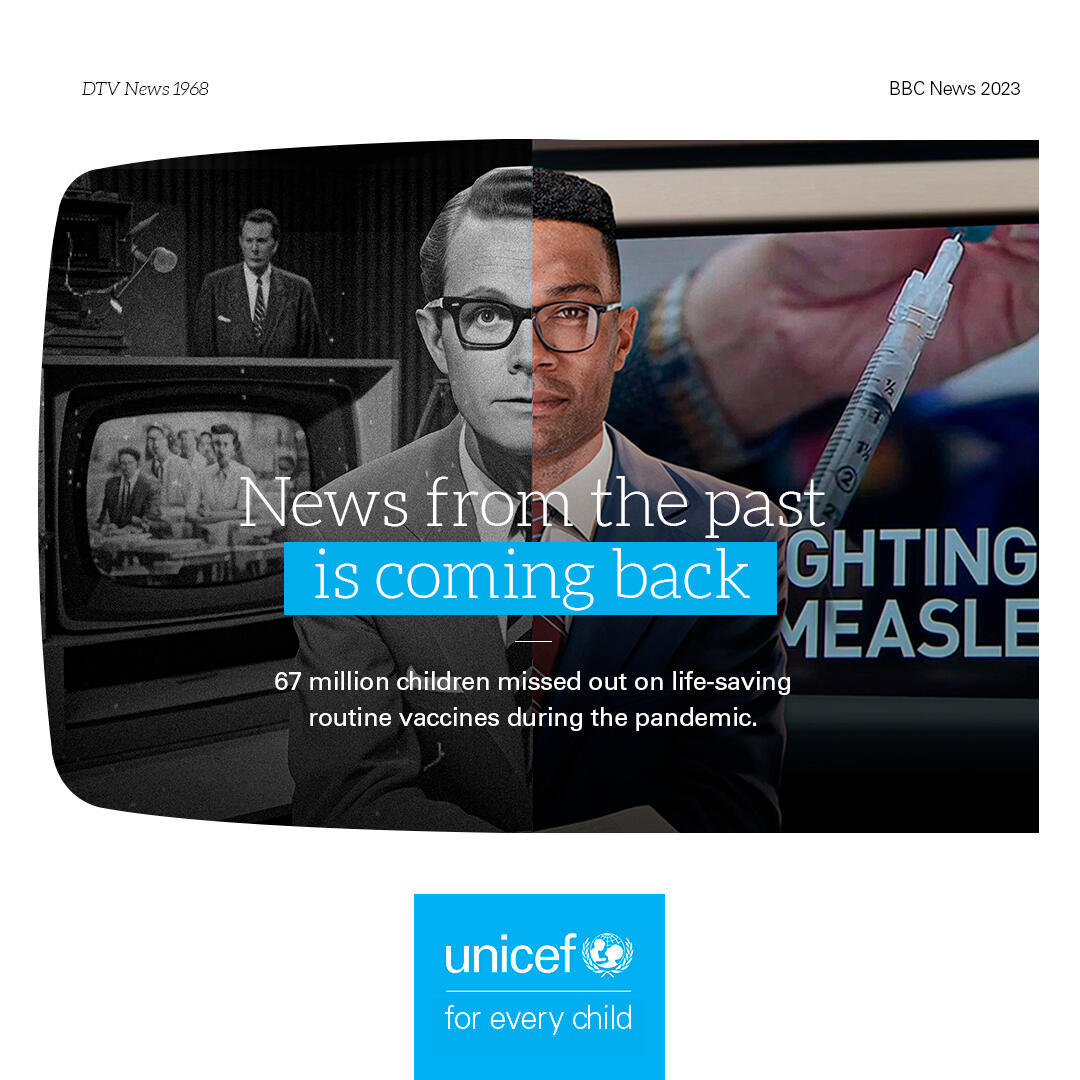
Every year, World Immunization Week (WIW) is a critical time to raise awareness around the importance of vaccination, accelerate efforts to bring vaccines to those most in need, and highlight the incredible work already accomplished in the immunization space.
In response to the COVID-19 pandemic’s disruption of global immunization, the theme of this year’s WIW is “The Big Catch-Up.” Now more than ever, a collective effort is needed among intergovernmental agencies, world leaders, and health workers to recover from the backsliding caused by the pandemic, as millions of people, especially children, have missed out on routine immunizations. This week marks the beginning of the World Health Organization (WHO)’s year-long push to return to pre-pandemic vaccine coverage levels.
With childhood vaccination rates dropping to the lowest levels in three decades, we are now seeing breaking news about outbreaks from past years reappear in news media coverage today.
Decline in immunization rates
BEFORE: Studies of missed opportunities for immunization in developing and industrialized countries. (1993) — World Health Organization
NOW: COVID-19 Pandemic Fuels Worst Decline in Childhood Vaccinations in 30 Years (July 14, 2022) — Time Magazine
Despite the world’s sustained efforts to bring lifesaving vaccines to all children, WHO reported the pandemic led to the largest decline in childhood vaccinations in over thirty years in 2022. While the world’s focus was turned toward combating COVID-19, these efforts came at the expense of disrupted routine immunization campaigns. As supply chains were affected, resources became inaccessible and misinformation about vaccines increased.
But this is not the first time that the world has witnessed a decline in immunization rates. As early as 1993, studies found that the lack of routine immunizations, standardized healthcare systems, and vaccine shortages were among the many barriers to immunization efforts in various countries
The 2022 Time Magazine article further details WHO’s press release on the decline in childhood immunization. The WHO report noted that 25 million children missed out on routine immunizations for vaccine-preventable diseases like polio and measles in 2021 alone. In all, as many as 67 million children did not receive routine vaccines as a result of the pandemic, according to UNICEF’s 2023 State of the World’s Children report. Among these children, 48 million of them are considered zero-dose because they have not received any vaccine, which leaves us further away from meeting the immunization goals set by the Sustainable Development Goals.
Outbreaks of vaccine-preventable diseases
I. Polio:
BEFORE: All San Antonio Schools Close: 2 More Polio-Suspected Cases Reported (June 29, 1953) — San Antonio Express News
NOW: How polio came back to New York for the first time in decades, silently spread and left a patient paralyzed (October 4, 2022) — CNBC
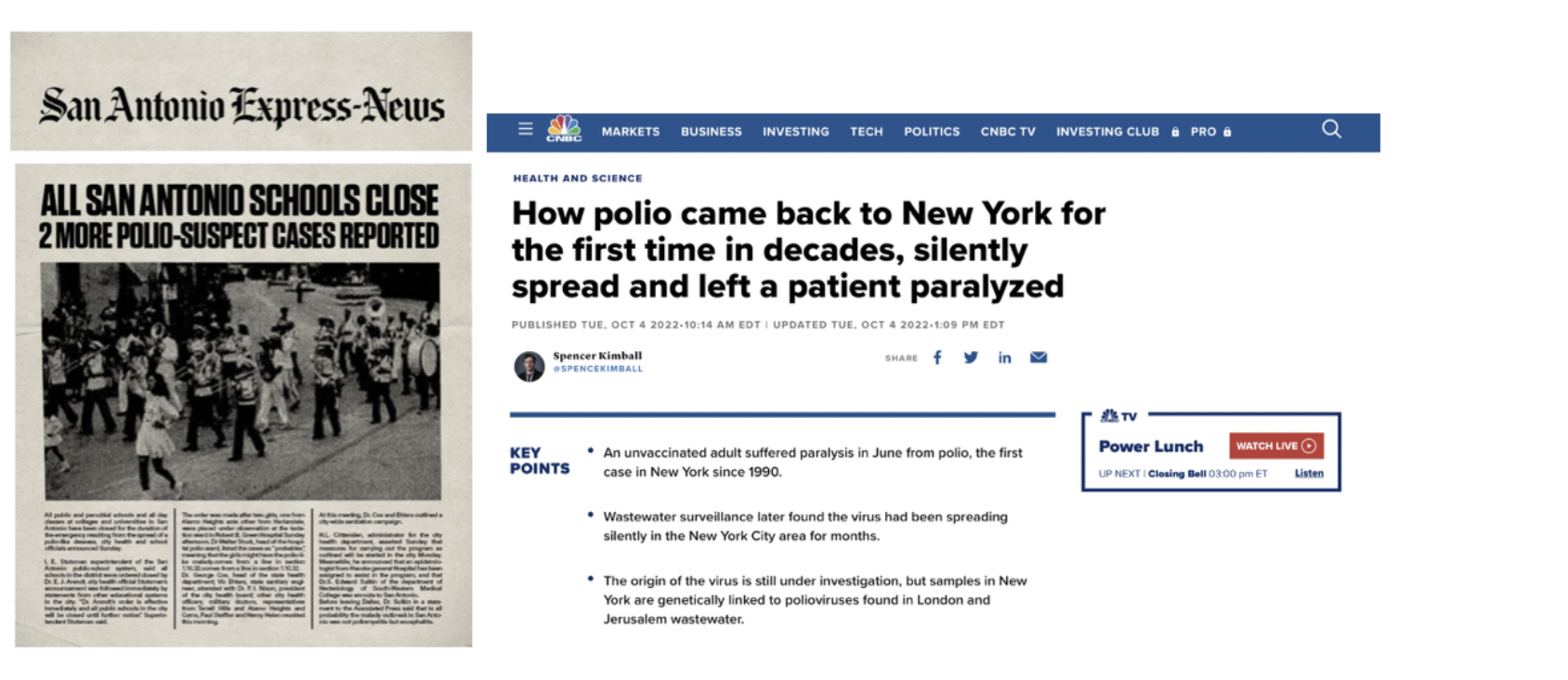
II. Measles:
BEFORE: Measles Outbreak Concerns County (April 1, 1980) — Daytona Beach Morning Journal
Now: Measles Outbreak: Vaccinations Fall as Disease Spreads (May 3, 2022) — Bloomberg News
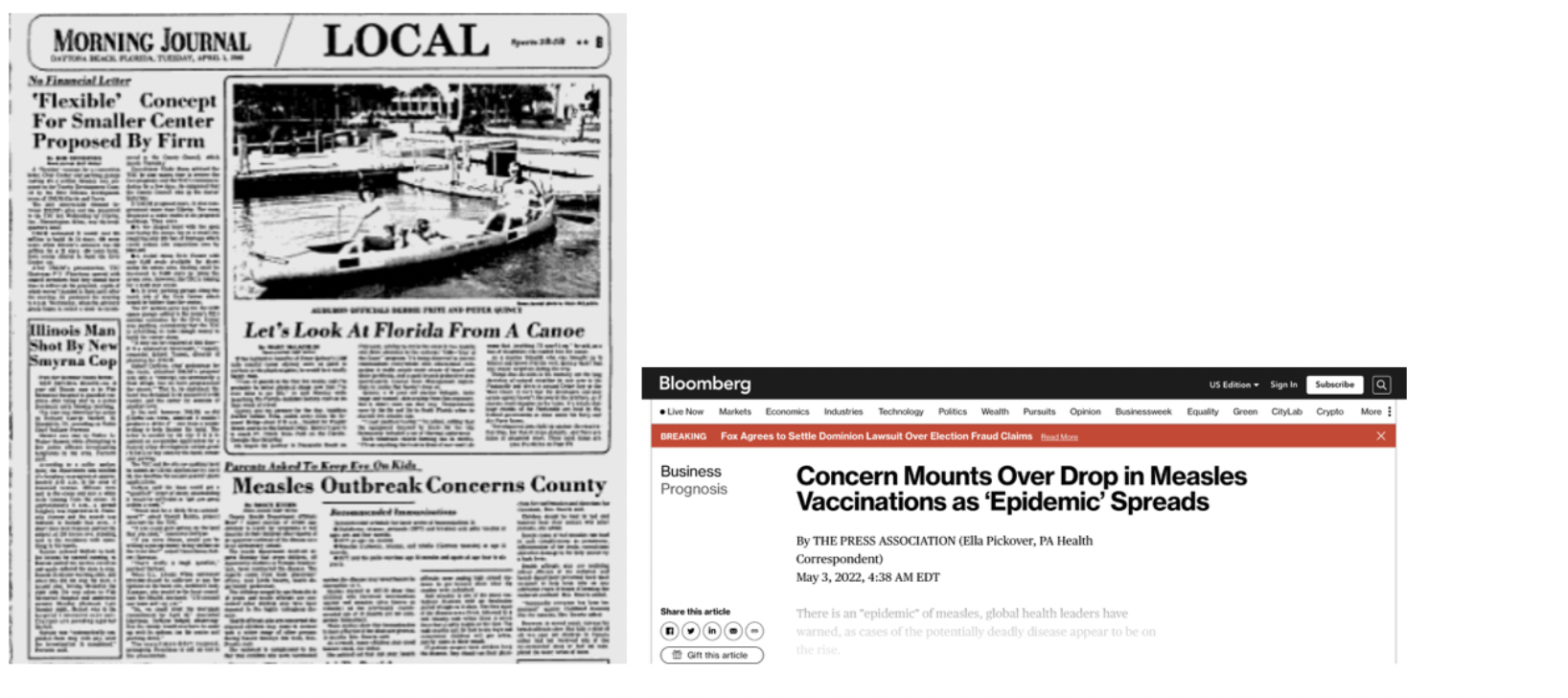
III. Pneumonia:
BEFORE: Atypical pneumonia outbreak (March 15, 2003) — The Indiana Gazette
NOW: Mysterious Pneumonia Outbreak In Argentina Has Resulted In 3 Deaths, WHO Monitoring (September 3, 2022) — Forbes

IV. Diarrheal disease
BEFORE:
High death rate. Diarrheal disease the Main Cause (July 28, 1899) — The Buffalo Commercial
Race against time to avert killer epidemic (December 31, 2004) — The Independent
NOW: Rotavirus childhood vaccine shortage hits four African countries (August 11, 2022) — Reuters
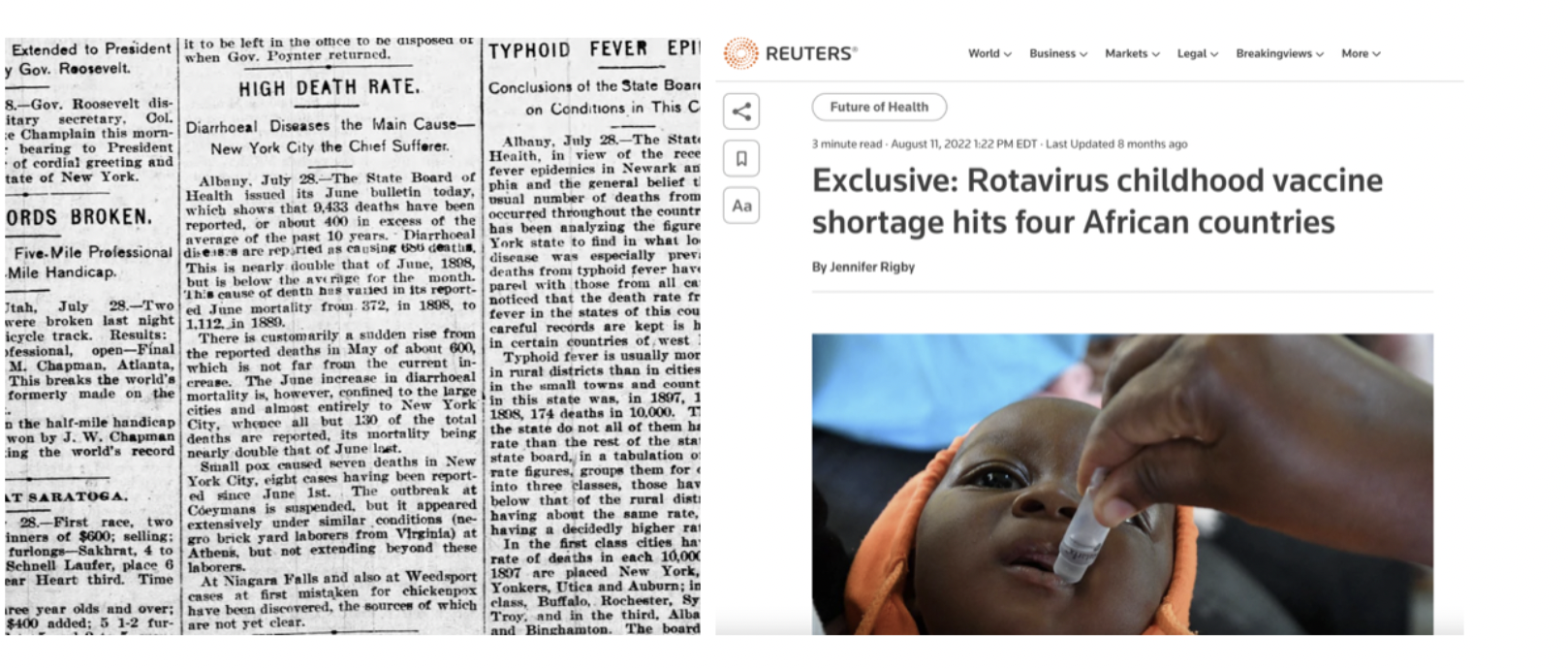
Before vaccines, outbreaks of diseases like polio, measles, pneumonia, and diarrheal disease were much more common and deadly. Many news articles from past decades have covered the outbreaks of these diseases, capturing the concerns raised by families, health officials, and even WHO. Then, public health experts called for increased immunization and acted quickly to identify factors increasing the spread.
Now, following the pandemic, there has been a constant stream of media outlets reporting on outbreaks of these same diseases occurring all over the world. Even if the tools to protect the public against the spread of these vaccine-preventable diseases are available, vaccines can only do so much if they are not equitably distributed and reaching those in need. WHO’s year-long campaign to “catch-up” on immunizations is imperative to counter the resurgence of these diseases.
However, not all parallels between the past and present are dark. While there is an urgent need to address the backsliding in immunizations and outbreaks of diseases, recent events have demonstrated that it is indeed possible to work together to eliminate these diseases — as the world accomplished previously with smallpox.
Development of new vaccines in response to emergency outbreaks
BEFORE:
An Enquiry into the Natural History of a Disease (August 21, 1797) — The Gloucester Journal
As to Vaccination. Some facts about its discovery. (December 28, 1893) — The Morning Record
NOW: Inside the multibillion dollar race for a Covid-19 vaccine (August 14, 2020) — CNN

Before Edward Jenner developed the vaccine for smallpox in 1796, outbreaks of smallpox ravaged communities for centuries, proving fatal to hundreds of thousands of individuals. The disease spread in Asia and Europe and devastated the Americas when the Spanish and Portuguese arrived. However, many people noticed that those who were lucky enough to survive smallpox did not get infected during future outbreaks. Jenner’s discovery was groundbreaking and integral to the prevention of outbreaks and the eventual eradication of smallpox. In a 1797 article in The Gloucester Journal, Edward Jenner’s study was circulated and shared. Almost a century later, in 1893, The Morning Record published an article highlighting the impact of his work.
Since then, scientists have followed Jenner’s example and developed vaccines to protect against disease and prevent future outbreaks.
Equipped with the knowledge and tools of modern medicine, scientists reacted rapidly to develop a vaccine against the COVID-19 virus. As early as December 2020, some vaccines were already in being produced and distributed — less than a year after WHO’s declaration of COVID-19 as a pandemic in March 2020. The development and distribution of a vaccine for COVID-19 happened on a much quicker timeline compared to smallpox, as shown by CNN, and its success demonstrates how far vaccine development has come over the years.
Advancements in vaccines development have given us the means to prevent so many deadly diseases. Our leaders and institutions must prioritize essential immunization services for countries to recover the ground lost during the pandemic.
Diseases near eradication
BEFORE: Smallpox faces eradication soon (1976) — Bangor Daily News
NOW: Polio almost eradicated. This year, it staged a comeback. (August 18, 2022) — The New York Times
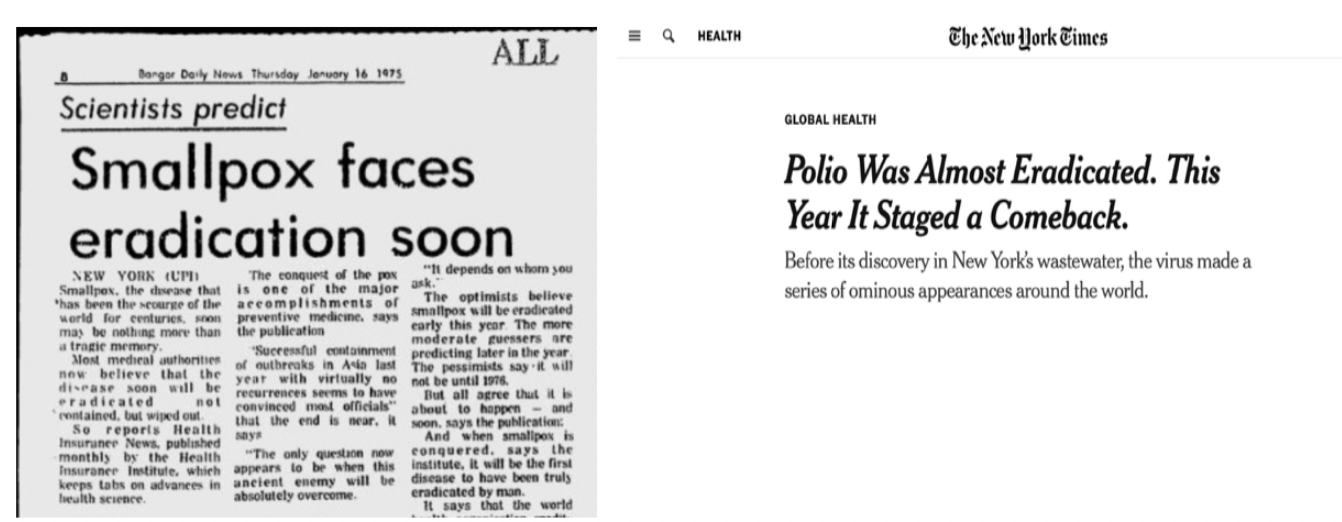
After years of developing and distributing the smallpox vaccine worldwide, WHO launched a plan to eliminate smallpox in 1967. A 1976 headline from the Bangor Daily News reports that smallpox was nearing eradication, with some people predicting that it would be completely eradicated by the end of that year at the latest. While it took a little bit longer than the Bangor Daily News predicted, WHO declared that smallpox was eradicated in 1980.
Fortunately, we now see that another vaccine-preventable illness is on the same road to eradication. Since the World Health Assembly announced its plan to eradicate polio in 1988, there has been a 99.9% reduction in polio transmission worldwide. However, because of the recent pandemic, efforts to completely eradicate polio have stalled. This makes the collective action of intergovernmental agencies more important than ever, so that countries can not only catch up on immunization efforts, but finally make polio a thing of the past, just like smallpox.
The return of these major headlines in the news has not gone unnoticed, as countries and organizations have already made progress to fill the gaps in immunizations through vaccination campaigns and programs. However, more action is needed to strengthen healthcare services and intensify immunization efforts to set the world back on track in accordance with the Immunization Agenda 2030. Vaccines are the most cost-effective and reliable protection we have against many deadly diseases, and they are the best way to ensure every child has the shot at life they deserve.
